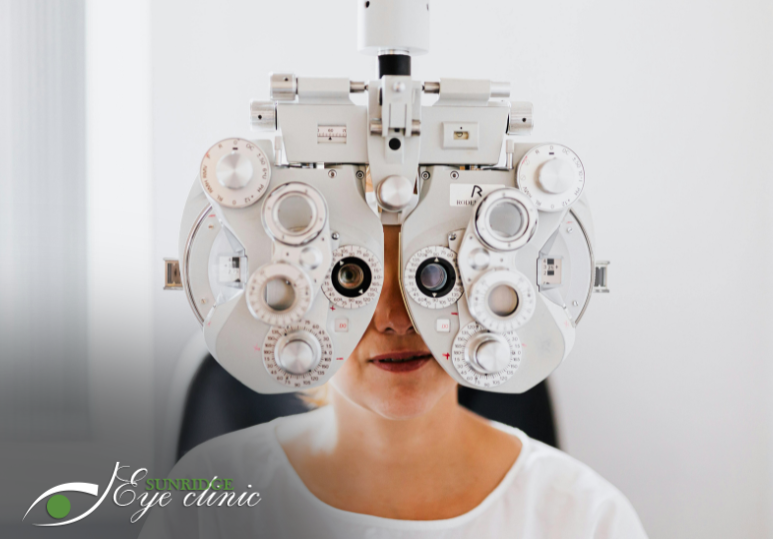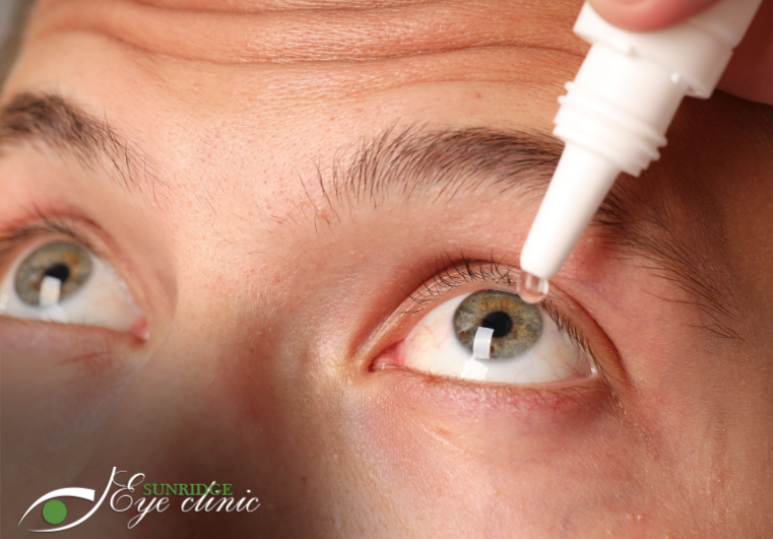How Does An Optometrist Diagnose Dry Eye Symptoms?
The diagnosis of dry eye syndrome is based on a combination of tests and patient-reported symptoms. There are many factors and underlying causes of dry eye syndrome, therefore, a complete health history and thorough eye examination are necessary to correctly diagnose and treat the condition. During your comprehensive eye exam, your optometrist will use these tests to determine the root cause of your dry eyes and will then create a treatment plan tailored to you.
Schirmer Test: This is the most common test performed by optometrists to assess dry eye syndrome. The Schirmer test measures aqueous tear production which is essential for keeping your eyes adequately lubricated. To perform this test, your eye doctor will place a blotting strip (thin piece of paper with measurement lines) on the inside of your eyelid. They will then have you gently close your eyes for five minutes before removing the strips. Your doctor will take note of how much moisture was collected on the strip to determine the severity of your dry eye syndrome. A reading of 10mm of moisture is considered a normal reading. Your eye doctor may administer numbing eye drops to prevent the paper from irritating your eye as well as to avoid reflex tear production which can alter the test results.
Phenol Red Thread Test (PRT): This test is performed similarly to the Schirmer test but instead uses a small, red thread instead of blotting strips. This test causes less reflex tearing, therefore, numbing eye drops are unnecessary. Your eye doctor will place the thread on the inside of your eyelid just like the Schirmer test and will have you close your eyes for fifteen seconds. The thread contains a pH-sensitive dye that changes colour depending on the amount of tear production. After fifteen seconds, your optometrist will remove the threads and measure the amount of tear production.
Meibomian Gland Exam: Meibomian gland dysfunction is the most common cause of dry eye syndrome. Meibomian glands are the tiny oil glands that line the margin of your eyelids. Your tear film is made up of water, mucus, and oil which are all essential to properly lubricate your eyes. The main job of oil production is to prevent water lubrication from evaporating too quickly. The most common type of meibomian gland dysfunction occurs when the glands become clogged resulting in less oil being secreted into your eye. Your eye doctor will take a close look at your meibomian glands to ensure they are not clogged and are secreting clear oil. If your doctor of optometry notices that your glands are having trouble secreting any oil at all or if the oil is coloured and thick, you may be suffering from chronic dry eye syndrome.
Calgary Dry Eye Clinic
Dry eye syndrome is one of the most common ocular surface disorders that impact the quality of life for millions of people worldwide. Dry eye is usually chronic and cannot be cured, however, symptoms can be managed and comfort can be improved. If dry eye is left untreated, it can lead to the scarring of the sensitive corneal tissue, impairing your vision. If you experience burning sensations, itchiness, the feeling that something is always stuck in your eye, or eye redness and irritation, visit your optometrist right away to receive treatment to help you see comfortably once again.
If you have been suffering from dry eye syndrome and over-the-counter eye drops and medications are not alleviating your uncomfortable symptoms, book a comprehensive eye exam today with one of our experienced optometrists. At Sunridge Eye Clinic, our eye specialists take the time to accurately assess the severity of dryness and prescribe the most appropriate treatment options. Contact our team today to book your comprehensive eye exam and dry eye test by calling (403) 280-7518 or by filling out our online contact form.
FAQs
Q: Is dry eye syndrome curable?
A: Unfortunately, dry eye syndrome is not curable. However, the symptoms of dry eye can be managed through several treatments including prescription eye drops, IPL therapy (Intense-Pulse-Light Therapy), and procedures that close your tear ducts to prevent your tears from leaving the surface of your eye too quickly.
Q: What are some common symptoms of dry eye syndrome?
A: The most common symptoms of dry eye syndrome include:
- Gritty feeling
- Burning sensation
- Itchy eyes
- Sore eyes
- Redness
- Eye fatigue
- Feeling like you have an object stuck in your eye
Q: Does receiving a Schirmer’s test hurt?
A: The Schirmer’s test should not be uncomfortable or cause you any pain. Your eye doctor will first administer numbing eye drops which will prevent you from feeling the thin blotting strip come into contact with your eye.






